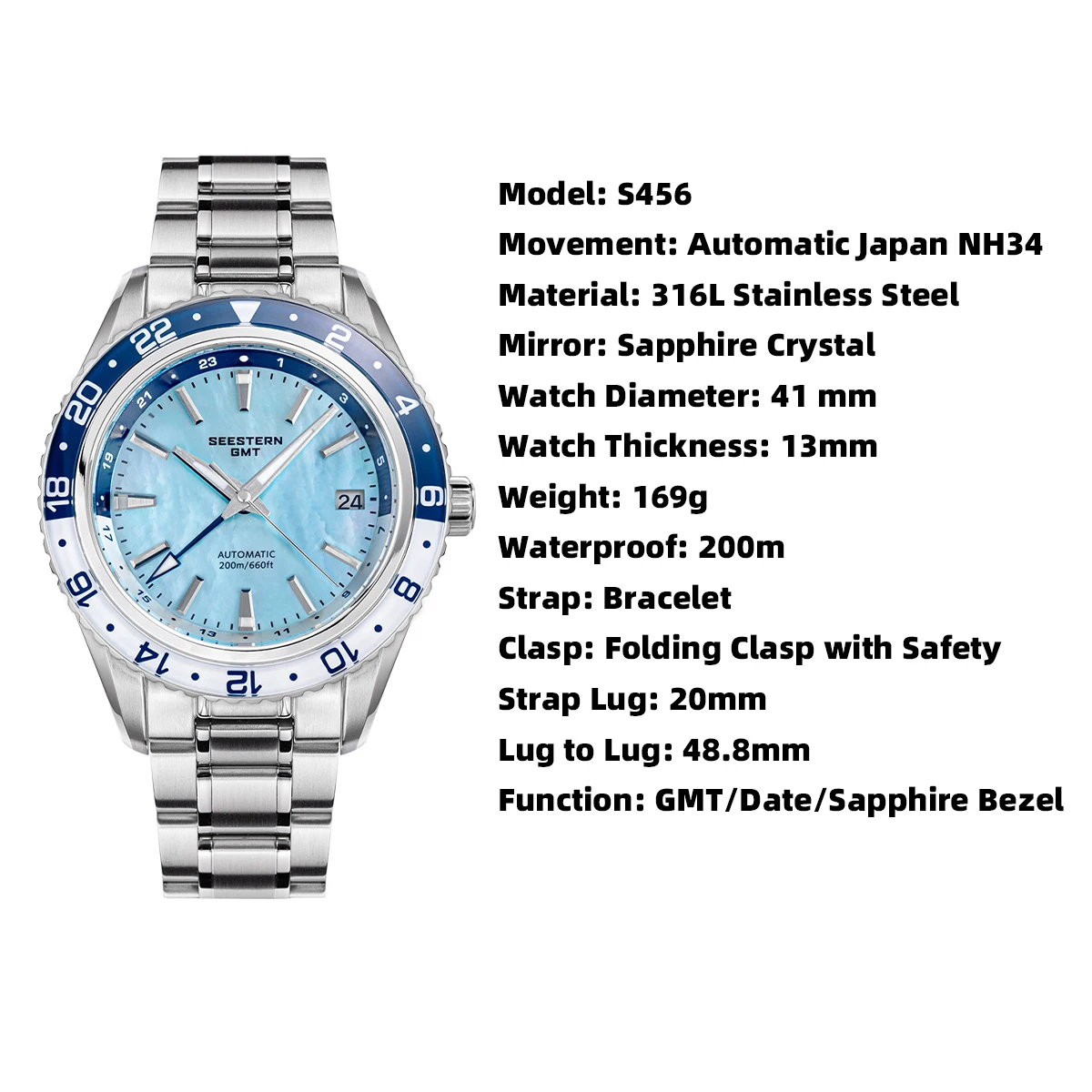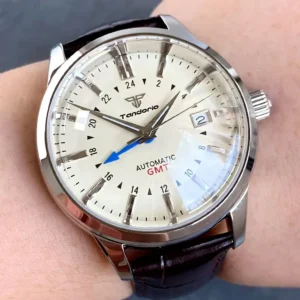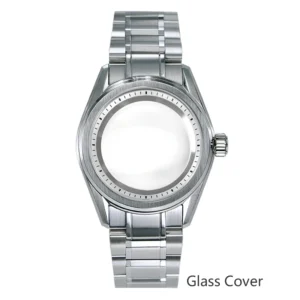Introduction: Where Dual-Time Tracking Meets Underwater Exploration
GMT dive watches represent a fascinating intersection in horology – specialized timepieces that combine traditional dive watch capabilities with the ability to track multiple time zones simultaneously. These watches answer a unique challenge: how to maintain essential underwater timing functions while adding the practicality of tracking different time zones.
The inherent conflict between these two functions creates an interesting design challenge. Dive watches traditionally require unidirectional rotating bezels for safety during underwater timing, while GMT functions often utilize bidirectional 24-hour bezels for time zone adjustments. This fundamental tension has led watchmakers to develop various ingenious solutions.
In recent years, these dual-function watches have seen growing popularity among diving professionals and enthusiasts who travel internationally or coordinate with teams across time zones. The versatility of tracking both dive time and different time zones makes these watches particularly valuable for global adventurers.
But what exactly makes an ideal GMT layout for serious dive purposes? The GMT functionality in dive watches must be carefully integrated without compromising underwater safety and usability. Throughout this guide, we’ll explore different layouts, evaluate their pros and cons, and examine real-world examples to help you understand which configuration might best suit your underwater adventures.
The art of understanding GMT on dive watches involves appreciating both the technical requirements of underwater timing and the practical application of time zone tracking in a single, cohesive design.
Why Divers Need GMT Functionality: Real-World Applications
GMT functionality in dive watches serves several practical purposes that extend beyond mere convenience:
Surface Support Coordination: Professional divers often work with surface teams that may be operating in different time zones, particularly on offshore operations. The ability to track local time and surface team time simultaneously can be crucial for communication and scheduling.
International Dive Expeditions: When traveling across time zones for diving adventures, maintaining awareness of both local dive site time and home time helps with scheduling calls home, managing medication timing, or coordinating with people in your home time zone.
Scientific Diving: Marine researchers conducting underwater studies often need to synchronize data collection across global teams working in different time zones, making GMT functionality particularly valuable.
Commercial Diving Operations: Global commercial diving companies frequently coordinate operations across multiple time zones, with GMT dive watches helping supervisors and divers maintain scheduling clarity.
Decompression Management: In specialized technical diving scenarios, tracking decompression stops while also being aware of surface scheduling in different time zones becomes a safety advantage.
Travel Convenience: For recreational divers who travel internationally, the practicality of tracking home time while enjoying dive destinations eliminates the need to constantly recalculate time differences.
These diverse applications highlight why many divers have embraced watches with dual functionality. Understanding the various GMT dive watch use cases helps clarify why this specialized category continues to grow in popularity. For those ready to explore options, our collection of GMT dive watches offers examples of different approaches to this dual functionality.
Understanding Core Components: The Technical Challenge
Creating an effective GMT dive watch requires balancing two distinct sets of technical requirements, each with its own specific functions and safety considerations.
Dive bezel requirements demand rigorous attention to safety and underwater visibility:
* A 60-minute unidirectional rotating bezel that can only move counterclockwise, preventing accidental extension of dive times
* High-contrast markings with luminous elements for visibility in low-light underwater conditions
* Compliance with ISO 6425 standards, which specify minimum requirements for dive watches including water resistance, reliability under pressure, and bezel functionality
In contrast, GMT mechanisms have their own distinct requirements:
* A 24-hour scale to differentiate between AM and PM hours in the second time zone
* Typically, a bidirectional rotating bezel for easy adjustment when changing time zones
* A distinctive GMT hand that stands apart from hour, minute, and second hands, usually with bright coloration or unique shape
The fundamental challenge watchmakers face lies in reconciling these potentially contradictory requirements. The unidirectional safety feature of a dive bezel directly conflicts with the bidirectional functionality preferred for a GMT bezel. Additionally, the legibility requirements for both functions must be balanced without creating a cluttered, unreadable dial.
This technical puzzle has led manufacturers to explore several different layouts, each making specific compromises between dive functionality and GMT practicality. Some prioritize diving safety with traditional unidirectional bezels while finding alternative ways to display GMT information. Others emphasize GMT functionality while finding workarounds for dive timing.
For those seeking watches that meet professional specifications, our professional-spec dive watches collection includes models that maintain technical excellence while incorporating additional functionalities.
Layout 1: Unidirectional Dive Bezel with Internal GMT Scale
This layout represents the most dive-focused approach to combining GMT functionality with underwater timing capabilities. The watch features a traditional 60-minute unidirectional rotating dive bezel on the exterior, while the 24-hour GMT scale is printed on the inner flange (rehaut) or directly on the dial itself.
In this configuration, the GMT function operates through a dedicated GMT hand that points to the fixed 24-hour scale on the inner part of the watch face. The primary dive timing function remains completely intact with the traditional unidirectional bezel.
| Advantages for Divers | Limitations |
|---|---|
| Preserves uncompromised dive timing functionality | GMT scale is typically smaller, potentially reducing legibility |
| Maintains potential for ISO 6425 compliance | 24-hour scale is fixed, limiting flexibility |
| Clear separation of functions prevents underwater confusion | Usually only tracks two time zones (not three) |
| Full dive bezel markings remain uncluttered | GMT function can be harder to read at a glance |
| Maximum safety with unidirectional rotation | Setting second time zone requires adjusting the GMT hand via the crown |
This layout excels in situations where diving functionality must take priority, with GMT capability serving as a useful but secondary feature. The design ensures that critical dive timing is never compromised for the sake of time zone tracking.
Notable examples of this configuration include watches with high-contrast dials where the GMT scale is subtly integrated around the perimeter, creating a visually distinct but accessible second time reference. Others feature more prominent internal GMT scales with highly visible 24-hour markings that stand out clearly even in low-light conditions.
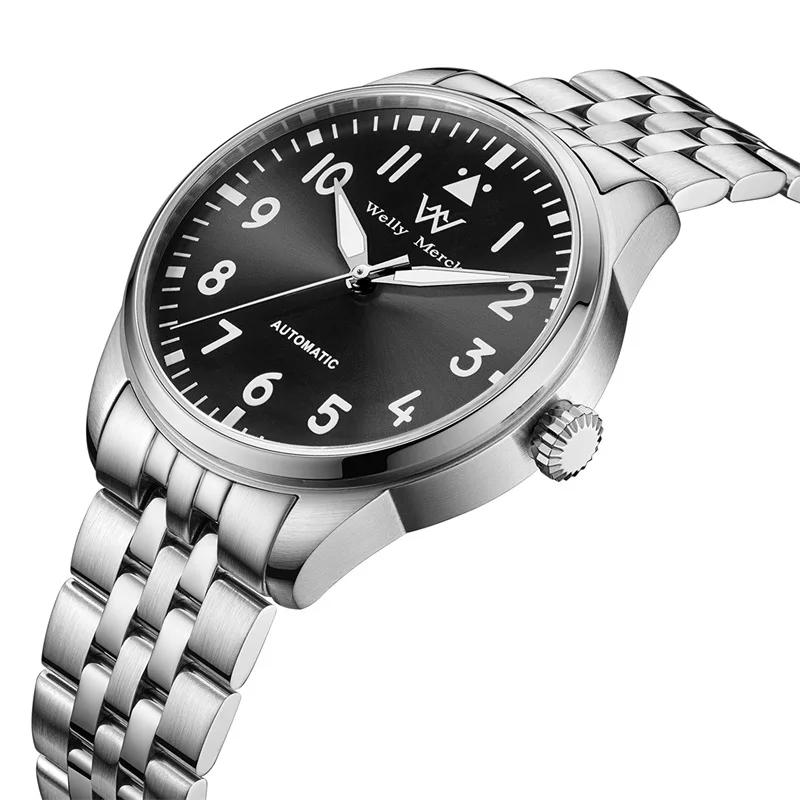
Understanding the intricacies of decoding dive watch GMT functionality helps appreciate why this layout represents an elegant solution for divers who prioritize underwater safety while still needing occasional time zone tracking capabilities.
Layout 2: Bi-directional 24-Hour GMT Bezel
This layout takes a fundamentally different approach by making the GMT function the primary external feature. The main rotating bezel is a bidirectional 24-hour GMT scale, allowing the wearer to track a third time zone (beyond the local time shown by the main hands and the second time zone shown by the GMT hand pointing to the fixed 24-hour scale).
In this configuration, dive timing becomes the secondary function, often achieved by using the 24-hour bezel creatively or through additional markers incorporated into the GMT bezel design.
| Advantages | Limitations for Diving |
|---|---|
| Larger, more legible 24-hour scale | Bidirectional rotation presents safety concerns for dive timing |
| Ability to track three time zones simultaneously | May not meet ISO 6425 requirements for professional dive watches |
| More versatile for frequent travelers | Risk of accidental bezel movement underwater |
| Quicker adjustment of third time zone | Dive timing markings may be limited or compromised |
| Typically easier to read at a glance | Primary safety feature of dive watches is eliminated |
This layout clearly prioritizes GMT functionality over dedicated diving features, making it better suited for travelers who dive occasionally rather than serious divers who travel. The bidirectional bezel, while excellent for quickly adjusting to new time zones, lacks the critical safety feature that prevents accidentally extending dive times.
Some watches in this category attempt to mitigate these limitations by incorporating minute markings alongside the 24-hour scale or using distinctive color coding to aid underwater legibility. Others feature stiffer bezel action to reduce the risk of accidental movement, though this doesn’t fully address the safety concerns.
For travelers seeking GMT functionality with water resistance suitable for occasional diving, our GMT automatic watches collection includes options that emphasize time zone tracking while maintaining respectable underwater capabilities.
Layout 3: Hybrid Solutions and Innovative Mechanisms
Recognizing the compromise inherent in both previous layouts, some manufacturers have developed creative approaches that attempt to offer the best of both worlds. These hybrid solutions employ innovative mechanisms to preserve both the safety of dive timing and the flexibility of GMT functionality.
One innovative approach utilizes a dual-bezel system, where an external unidirectional dive bezel surrounds an internal rotating 24-hour ring controlled by a secondary crown. This preserves the safety feature of the dive bezel while allowing independent adjustment of the GMT function.
Another creative solution incorporates a locking bezel mechanism that can switch between unidirectional mode (for diving) and bidirectional mode (for GMT adjustments). When unlocked, the bezel can rotate in both directions to set the GMT function; when locked, it becomes a unidirectional dive bezel for safe underwater timing.
Some manufacturers have developed dual-purpose bezels with ingenious markings that serve both as a 60-minute dive timer and a 24-hour GMT scale. These typically use color coding, different sized markings, or clever graphic design to maintain legibility for both functions simultaneously.
While these hybrid solutions often represent the pinnacle of engineering creativity, they come with potential drawbacks. More complex mechanisms may raise concerns about long-term durability, especially in the harsh saltwater environment. Additional components like secondary crowns or locking mechanisms can also create potential failure points that don’t exist in simpler designs.
For those interested in reliable underwater timepieces with various complications, our automatic dive watches collection includes models with different approaches to multi-functionality while maintaining core diving capabilities.
Critical Design Elements for Any GMT Dive Watch
Beyond the basic layout, several critical design elements determine how well a GMT dive watch performs in real-world underwater conditions:
Legibility Requirements:
* High-contrast color schemes that maintain visibility underwater, where red colors fade first at depth
* Strategic luminosity application on both time-telling and GMT elements, with different colored lume to distinguish functions
* Distinct hand designs that prevent confusion between the GMT hand and other hands, especially in low-light conditions
* Clear separation between the dive timing scale and the 24-hour GMT scale
Water Resistance Considerations:
* Minimum 200m (660ft) depth rating for recreational diving, with 300m+ preferred for technical diving
* Screw-down crowns and case backs to prevent water ingress
* Properly tested gaskets and seals, particularly for watches with multiple crowns
* Case construction that can withstand pressure changes without affecting functionality
Movement Types and Their Implications:
* “Caller” GMT movements (where the GMT hand is independently adjustable) vs. “Traveler” GMT movements (where the main hour hand jumps in hour increments)
* Travel-friendly movements allow quicker adaptation to new time zones without stopping the watch
* Movement reliability and shock resistance for diving environments
* Power reserve adequate for multi-day dive trips
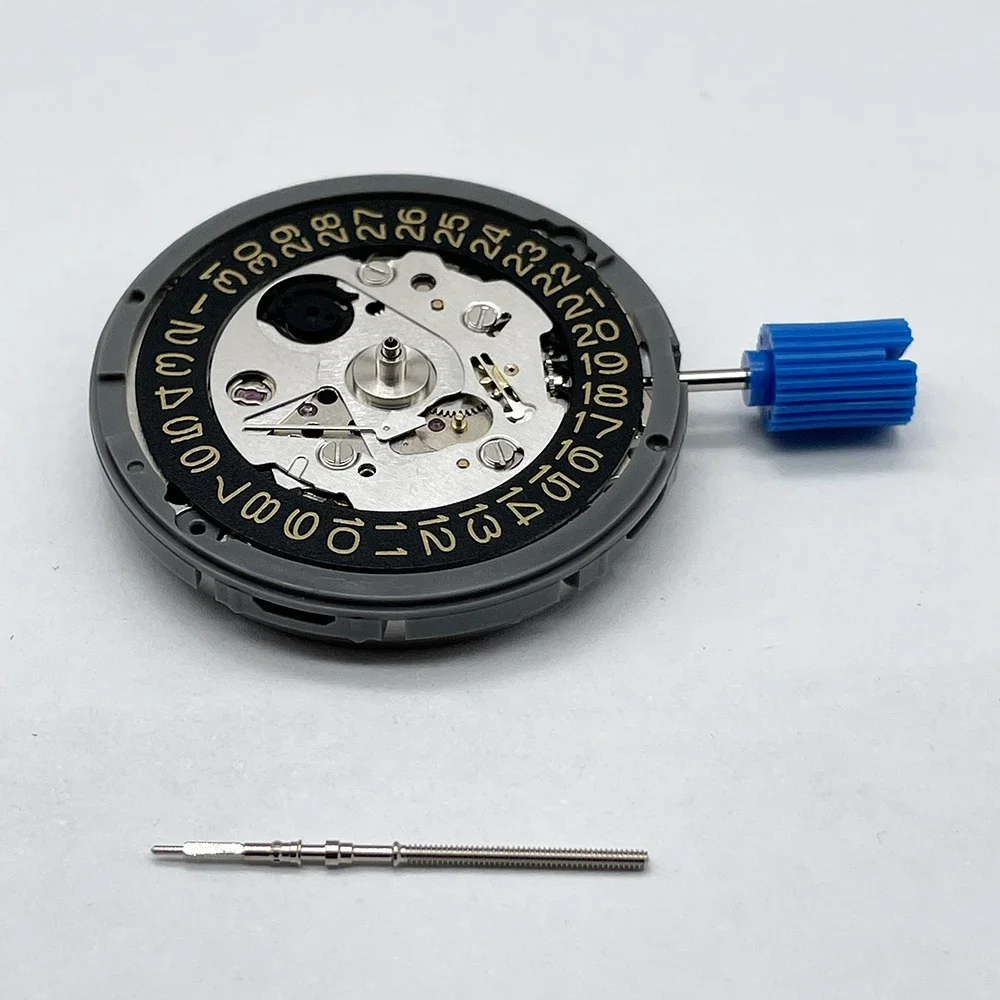
Practical Usability Factors:
* Bezel grip pattern that can be operated with wet or gloved hands
* Crown guards that protect against impacts without impeding operation
* Strap or bracelet systems with wetsuit extensions or quick-adjust features
* Case dimensions balanced between legibility and comfort under a wetsuit cuff
Understanding the differences between GMT and dive watches helps appreciate how these elements must be carefully balanced to create a timepiece that excels both underwater and during international travel.
Top GMT Dive Watch Layouts in Action: Case Studies
Let’s examine how different manufacturers have approached the GMT dive watch challenge, with each case study representing a distinct layout philosophy:
Case Study 1: Traditional Dive Priority
This watch exemplifies Layout 1, featuring a classic unidirectional 120-click dive bezel with minute markings and a fixed 24-hour scale on the inner rehaut. The GMT hand is tipped with a bright orange triangle that stands out against the matte black dial.
Key Features:
* 300m water resistance
* Helium escape valve for saturation diving
* Caller GMT movement
* Super-LumiNova applied to all hands, including the GMT hand
* 42mm case with anti-reflective sapphire crystal
Ideal For: Professional divers who occasionally need to track a second time zone but never want to compromise on dive functionality.
Case Study 2: Traveler’s GMT With Diving Capability
This model represents Layout 2, with a bidirectional 24-hour GMT bezel as its primary external feature. Dive timing is accommodated through a clever minute scale printed on the dial.
Key Features:
* 200m water resistance
* Traveler GMT movement with jumping hour hand
* Ceramic bidirectional bezel with 24-hour markings
* High-contrast dial with minute track for timing
* 41mm case with slightly stiffer bezel action to prevent accidental rotation
Ideal For: Frequent travelers who enjoy recreational diving but prioritize time zone tracking over professional dive features.
Case Study 3: Innovative Hybrid Design
This watch showcases Layout 3’s hybrid approach, featuring a unique mechanism where the external bezel serves as both a unidirectional dive timer and bidirectional GMT controller through a locking system controlled by a secondary crown.
Key Features:
* 300m water resistance
* Complex bezel locking system
* True GMT movement
* Dual-scale bezel with minute and 24-hour markings
* 43mm case with enhanced crown protection
Ideal For: Technical divers who travel internationally and need equal functionality for both diving and time zone tracking without compromise.
Case Study 4: Digital-Analog Hybrid
This modern interpretation combines traditional analog time display with digital technology to solve the layout challenge:
Key Features:
* 200m water resistance
* Analog hands for local time with traditional dive bezel
* Digital display for second and third time zones
* Multiple dive timing modes in digital display
* 45mm case with extensive digital functionality
Ideal For: Tech-forward divers who want comprehensive features without the constraints of pure mechanical solutions.
For travelers seeking timepieces with GMT functionality, our GMT watch buying guide for travelers provides additional insights into selecting the right watch for global adventures.
Choosing the Right GMT Dive Watch: Decision Framework
When selecting the optimal GMT dive watch for your needs, consider this decision framework based on your priorities:
Step 1: Determine Your Primary Use Case
* Primarily diving with occasional GMT use → Choose Layout 1 (Dive Bezel with Internal GMT)
* Primarily travel with occasional diving → Choose Layout 2 (GMT Bezel)
* Equal priority for both functions → Consider Layout 3 (Hybrid Solution)
Step 2: Consider Your Diving Profile
* Recreational diving only (depths less than 130ft/40m) → 200m water resistance sufficient
* Technical/professional diving → 300m+ water resistance and ISO 6425 compliance important
* Saturation diving → Helium escape valve and specialized construction necessary
Step 3: Assess Your GMT Needs
* Tracking only one additional time zone → Any GMT layout will work
* Need to track three time zones → Layout 2 or certain Layout 3 watches required
* Frequently changing time zones while traveling → “Traveler” GMT movement preferred
Step 4: Evaluate Practical Considerations
* Will you operate the watch with gloves? → Larger crowns and pronounced bezel grip important
* How important is legibility underwater? → Higher contrast and luminosity critical
* Do you wear a thick wetsuit? → Consider case size and strap expandability
By systematically working through these considerations, you can narrow down the optimal GMT dive watch layout that aligns with your specific diving activities, travel patterns, and personal preferences.
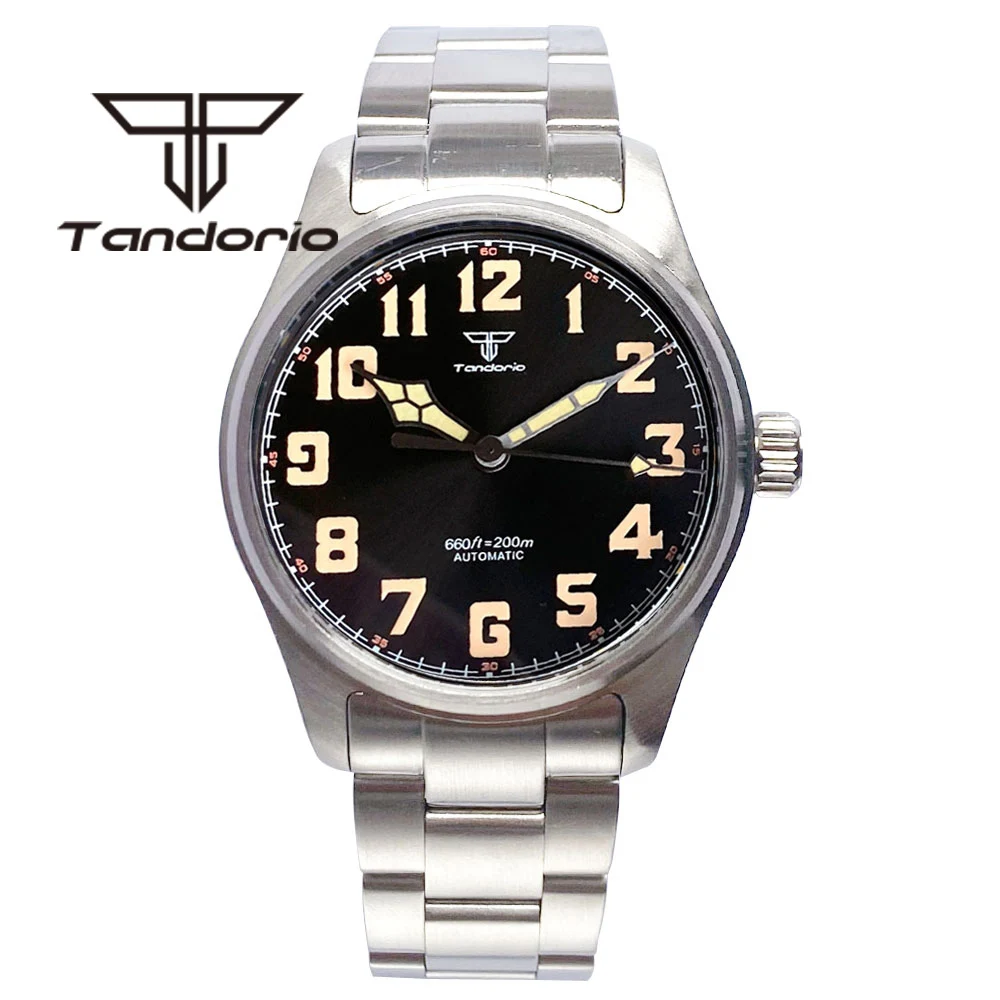
The evolution of dive watch technology has continually refined these specialized timepieces, creating increasingly sophisticated tools for underwater exploration.
Classic Automatic Dress Watches, GMT Automatic Watches, GMT Pilot Watches
Price range: $1,240.86 through $1,463.33 Select options This product has multiple variants. The options may be chosen on the product pageAutomatic Chronograph Watches, Classic Style Dive Watches
$3,053.06 Select options This product has multiple variants. The options may be chosen on the product pageBronze Automatic Watches, Military Inspired Automatic Watches, Professional Spec Dive Watches
Price range: $1,442.21 through $1,442.82 Select options This product has multiple variants. The options may be chosen on the product pageProfessional Spec Dive Watches, Titanium Automatic Watches
$574.74 Select options This product has multiple variants. The options may be chosen on the product pageClassic Automatic Dress Watches, GMT Automatic Watches, GMT Dive Watches
Price range: $468.93 through $552.94 Select options This product has multiple variants. The options may be chosen on the product pageGMT Automatic Watches, Unique Automatic Watches
$420.10 Select options This product has multiple variants. The options may be chosen on the product page
The Future of GMT Dive Watch Design: Emerging Innovations
The world of GMT dive watches continues to evolve with several exciting developments on the horizon. Materials science is transforming the durability and functionality of these specialized timepieces, with ceramic composite bezels offering improved resistance to scratching while maintaining visibility both above and below water.
Several manufacturers are exploring modular bezel systems that allow the user to physically swap between a unidirectional dive bezel and bidirectional GMT bezel depending on the planned activity. This approach eliminates compromise by allowing the watch to transform based on immediate needs.
Digital-mechanical hybrid systems represent another promising frontier, with traditional automatic movements paired with digital displays that can show multiple time zones without cluttering the analog display. These solutions maintain the soul and reliability of mechanical watches while leveraging technology for enhanced functionality.
Smart materials that change properties under pressure could potentially create bezels that automatically lock into unidirectional mode at certain depths, then return to bidirectional functionality at the surface. For those who appreciate aviation-inspired design, GMT pilot watches often feature innovations that eventually make their way into dive watch design.
Is a GMT Dive Watch Worth the Investment for Casual Divers?
For recreational divers who travel occasionally, the question of whether to invest in a GMT dive watch deserves careful consideration.
If you typically dive only while on vacation in a single location, a standard dive watch paired with smartphone time zone tracking may be sufficient. However, if you regularly coordinate diving with people in different time zones or frequently travel between dive destinations, the convenience of an integrated GMT function becomes more valuable.
Consider how often you would actually use both functions simultaneously. Many casual divers find that having GMT functionality enhances their travel experience beyond just diving, making the investment worthwhile for overall utility rather than strictly underwater use.
The real value proposition comes in the convenience of having a single robust timepiece that handles both needs without switching between devices. Understanding whether you can use a GMT watch for diving helps clarify if this dual-function approach meets your specific requirements.
Definitions: Understanding Watch Terminology for GMT Dive Watches
GMT (Greenwich Mean Time): The time at the Prime Meridian, used as a reference for time zones worldwide. In watches, it refers to the ability to track multiple time zones.
“True” GMT vs. “Office” GMT movements: True GMT movements allow the local hour hand to be adjusted independently in one-hour increments without stopping the watch. Office GMT (or “Caller” GMT) movements make the GMT hand independently adjustable instead.
ISO 6425: The international standard that defines requirements for dive watches, including water resistance testing, luminosity, and a unidirectional timing bezel.
Rehaut/chapter ring: The inner flange between the dial and crystal, often used for printing 24-hour scales in GMT dive watches.
Diver’s watch vs. water-resistant watch: A true diver’s watch meets specific standards for underwater use, while “water-resistant” watches may not be suitable for actual diving despite having some level of moisture protection.
Unidirectional vs. bidirectional bezels: Unidirectional bezels only rotate counterclockwise as a safety feature for diving, while bidirectional bezels rotate both ways for easier GMT time zone setting.
Helium escape valve: A one-way valve that allows helium molecules to escape during decompression after saturation diving, preventing damage to the watch.
Understanding the differences between GMT vs. dual time watches also helps clarify the specific functionality these specialized timepieces offer.
How Does a GMT Dive Watch Compare to Other Multi-Function Dive Watches?
| Watch Type | Primary Function | Advantages | Limitations |
|---|---|---|---|
| GMT Dive Watch | Time zone tracking + dive timing | Useful for travel and coordination across time zones | Often requires compromise between features |
| Dive Chronograph | Elapsed time measurement + dive timing | Precise timing of multiple events or intervals | More complex dial can reduce underwater legibility |
| Depth Gauge Watch | Automatic depth tracking + dive timing | Real-time depth information without digital dive computer | Usually bulkier with specialized sensors |
| Dive Computer | Comprehensive dive data tracking | Complete decompression information and multiple functions | Less stylish for everyday wear, requires charging |
| Analog-Digital Hybrid | Combined traditional and digital display | Maximum functionality with classic aesthetics | Complex operation, potentially overwhelming interface |
Each multi-function option addresses different needs for divers. GMT functionality specifically enhances the travel experience and cross-time-zone coordination without significantly complicating the watch’s operation or compromising core dive timing functionality.
For those who frequently dive internationally, the advantages of GMT function in divers may outweigh the benefits of other complications. The ideal choice depends ultimately on your specific diving profile and which additional functions would most enhance your underwater adventures.
At Sharp Aspect, we recognize that the perfect GMT dive watch balances technical excellence with practical usability, creating a versatile companion for both underwater exploration and global travel.

